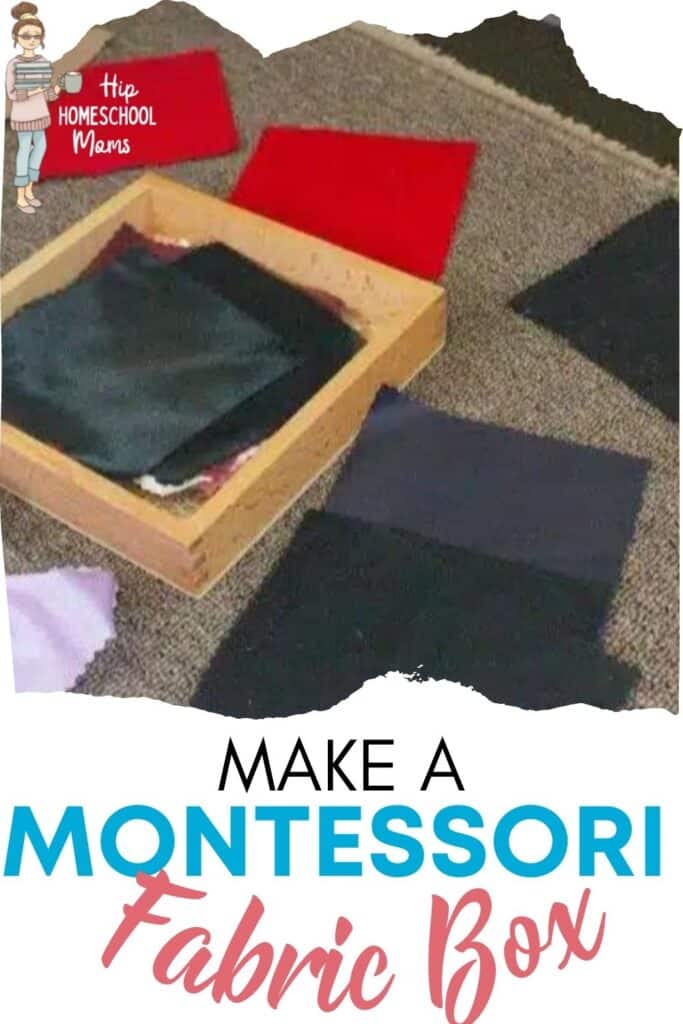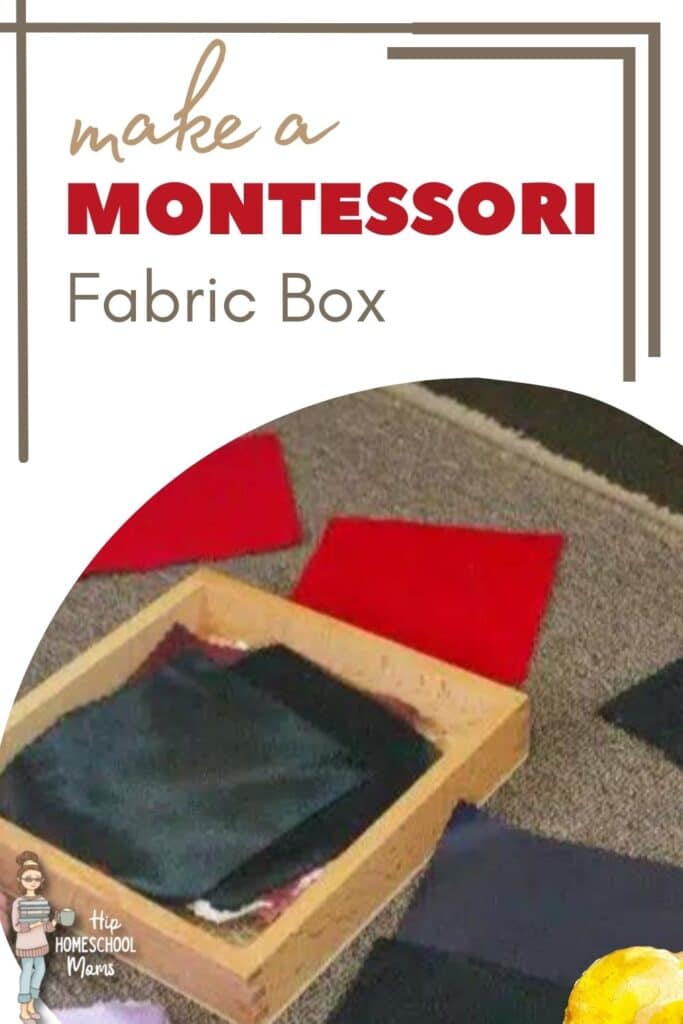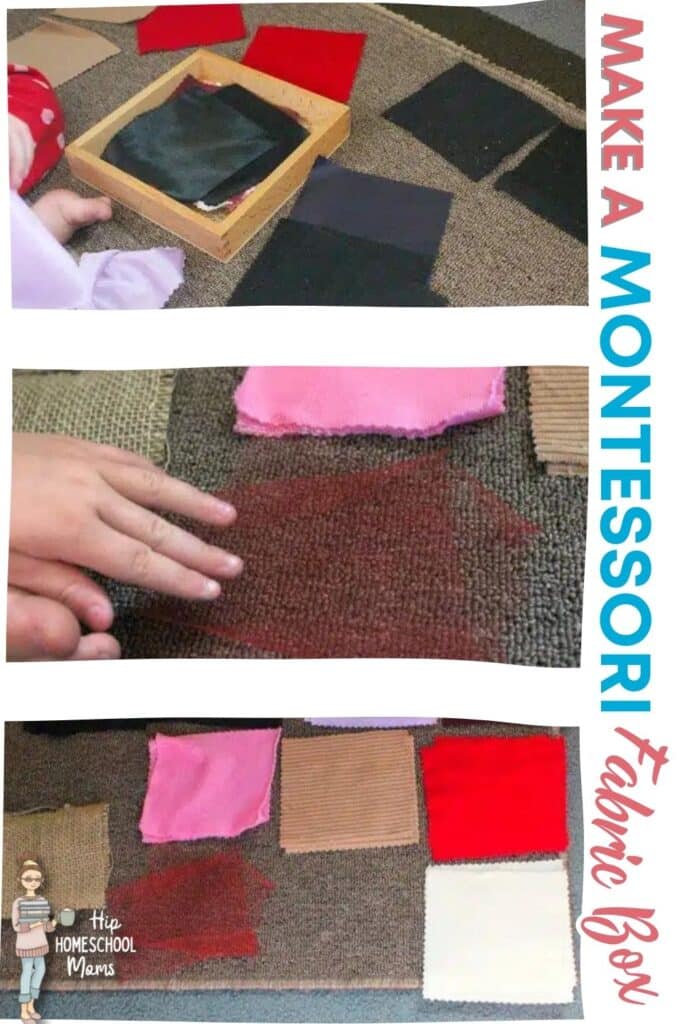Montessori Fabric Box Tutorial
What is the deal with the Montessori Fabric Box? What is so important about matching up fabric swatches? Well, this work is much more than that. It teaches your child sensorial skills, targeting texture, feel, and appearance. Your child also learns discrimination, coordination, and fine motor skills, just to name a few.
Do you love Montessori or have you been curious about it? Have you been wanting to look into it because it sounds interesting or have you never heard of it before? Well, I think you will enjoy this post very much, whether you are new to the Montessori Method or if you’re a newbie.
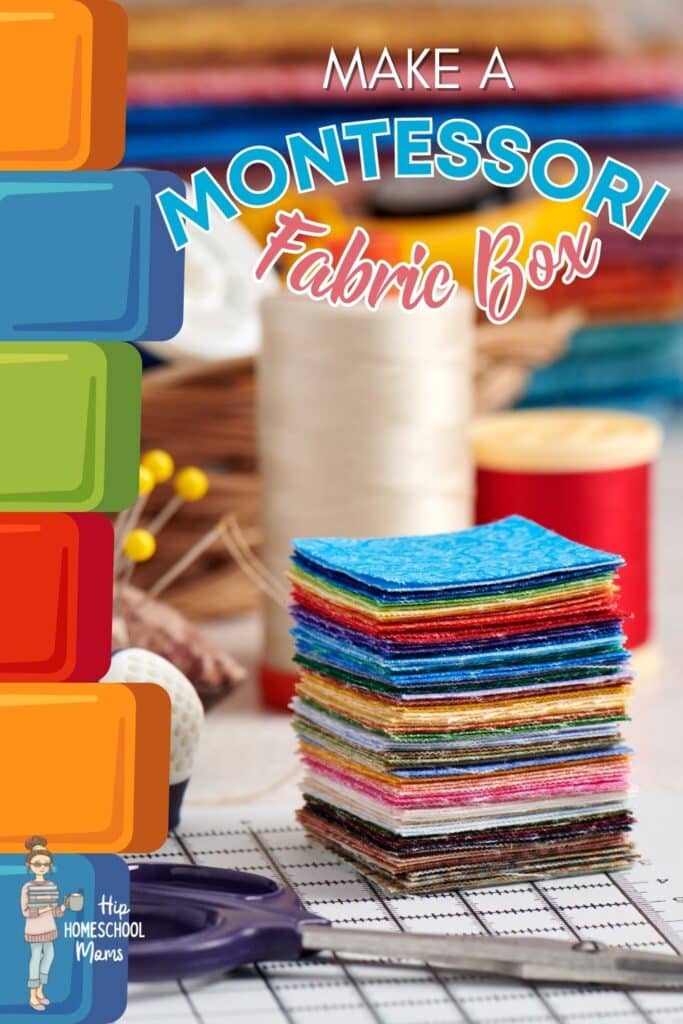
But first, let’s talk about what Montessori Sensorial is. Sensorial makes us think of touch, right? Feeling. Exploring. Observing. Concentration. Using all of the senses. Some Montessori Sensorial works include discriminating and comparing weight using a scale and the baric tablets. Children can explore temperature and how different surfaces feel and retain heat using the thermic tablets.
Children can blindfold their eyes and put together a binomial cube by feeling their way through the correct progression of steps. In short, sensorial works open up our children’s world to explore not just by looking and touching, but also by smelling (using smell boxes), by listening (by using sound cylinders) and even finding patterns and order using the knobbed cylinders.
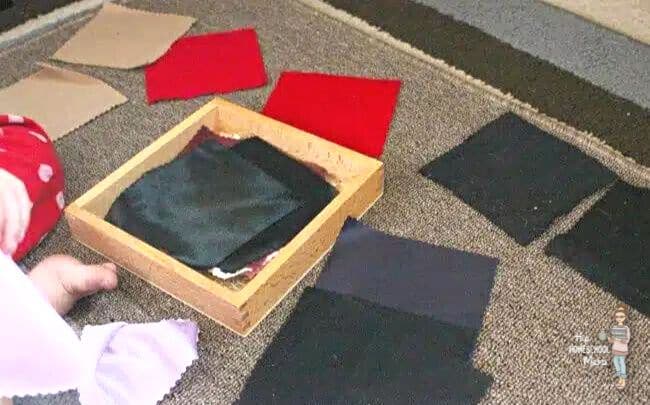
Montessori Fabric Box Tutorial
This is such a fantastic work and so easy to put together. Whoever said Montessori works had to be bulky and expensive all the time? Not at all! For this work, all you will need are two 5×5-inch squares in the same fabric. Find several types of textures in fabric. I recommend getting a dozen times two, if possible.

First, have your child (ideally, ages 2.5 up to maybe 5 or 6) take the fabric swatches out of the box and observe. Then they feel. Talk about the vocabulary for this lesson. Use words like soft, rough, smooth, bumpy, ribbed, etc. I prefer to begin using superlatives like smooth, smoother, smoothest and rough, rougher, and roughest.
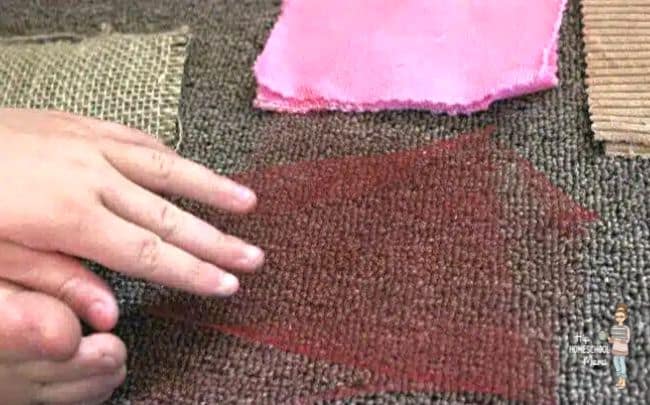
For the basic version of the Montessori Fabric Box Tutorial, the fabric swatches are mixed up and the child sorts them as he/she uses some of the vocabulary words. The child keeps going until all the fabric swatches are paired up correctly. The control of error for our set is the color of the fabric swatches.
For a more advanced extension of the Montessori Fabric Box Tutorial, hand the child a set of blindfolds and have the child sort and pair up the fabric swatches correctly without looking. I know it sounds like it would be hard and, at the beginning, it is, but eventually your child will choose to only sort these using the blindfolds. They will enjoy the challenge and want to show you just how well they can do this!
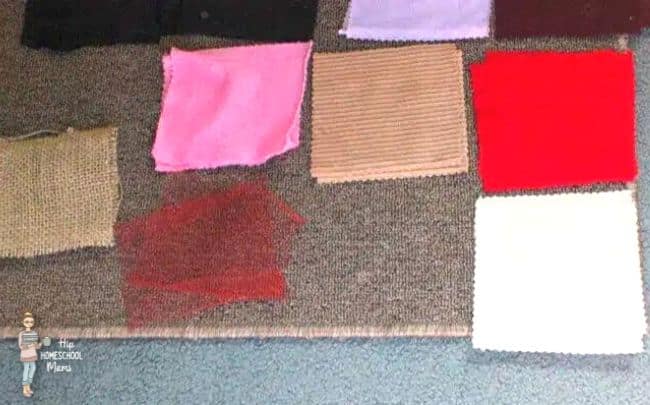
What do you think? Are you ready to get your own Fabric Box or to make your own? Don’t forget the blindfolds, too!
Play is a child’s work, but it’s easy to forget that in the midst of the day-to-day things we need to get accomplished in our homeschools. While the rest of today’s society seems to want to shorten childhood, having kids grow up faster than they should, we have the blessing of preserving childhood for as long as it can last. This is one of the blessings of using the Montessori method in homeschooling. It’s often just plain fun!
Thank you for visiting our Montessori Fabric Box Tutorial post! You might also like:
The Ultimate Homeschool Guide to Free Montessori Resources
Homeschool 101: Choosing Your Homeschooling Method

